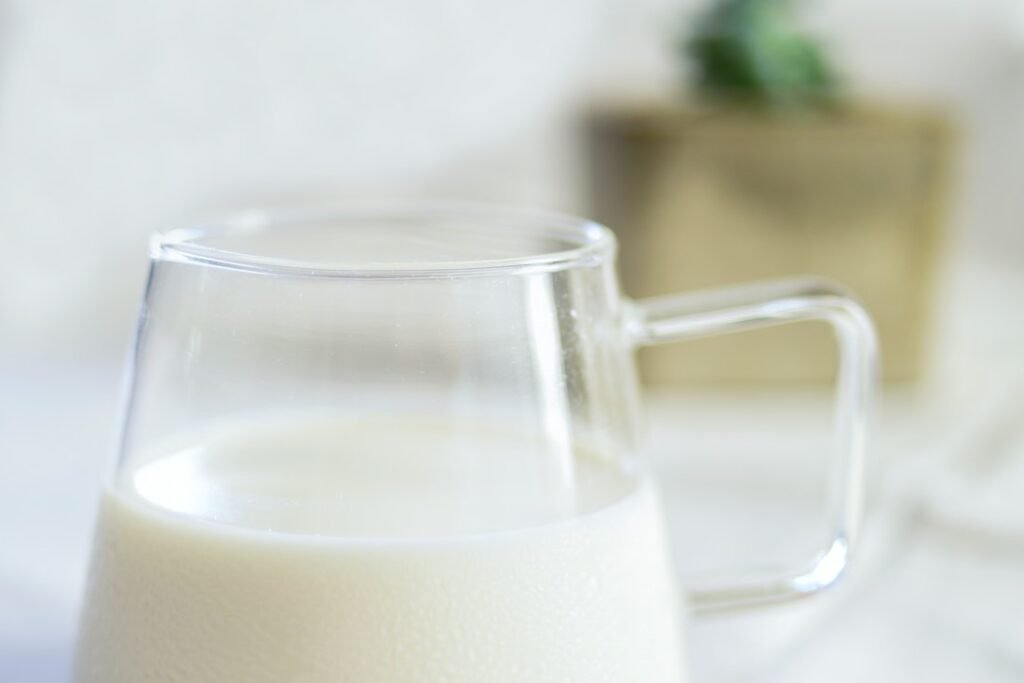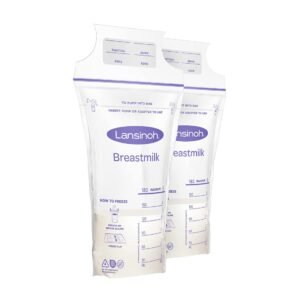
Breastfeeding a baby is easy, safe, and healthy. But at certain times, circumstances may force you to express breastmilk and bottle-feed the baby later.
What if the baby doesn’t finish the expressed breastmilk? Storing and reheating the milk seems a bright idea. But, can you reheat breast milk twice? Is it a healthy practice?
Read on for the facts on reheating breast milk.
Can you Reheat Breastmilk Twice?
When you have pumped fresh breast-milk more than the baby can consume at any given feeding time, you can store the excess in the freezer for later use.
But before feeding it to your infant, reheat the milk. And when warming up the milk, there is a correct way of doing it.
However, after using the thawed milk, it’s advisable to dispose of it within two hours after feeding. Do not return it to the freezer for the second time.
Reheating breastmilk twice has the following dangers;
Loss of Nutritional Value
As you warm the breastmilk, some percentage loss of the valuable nutrients in the milk occurs. No wonder there are recommended safe thawing methods to follow.
But even when you stick to such safe methods, it still can’t conserve the nutrients 100 percent. Besides, it also leads to the loss of the beneficial bacteria in the milk.
Contamination by Bacteria
During feeding time, the baby’s mouth makes contact with the feeding bottle. And by extension, the milk gets contaminated by some bad bacteria.
And so, it’s only a matter of time till the bad bacteria render the milk unfit for the infant’s consumption.
How soon it takes for the milk to go bad, making it unfit for the baby depends on three factors:
- The volume of bacteria overload in the milk
- The prevailing temperature of the surrounding
- How long the breastmilk had been thawed
It’s therefore wise to discard the left-over thawed milk one to two hours after feeding time.
So, What’s the Recommended Way to Warm/Thaw Breastmilk?

There are several ways of thawing frozen breast milk.
Dipping the Bottle into a Bowl of Lukewarm Water
One of the common ways to thaw breastmilk is dipping the milk storage bag or bottle in a bowl of lukewarm water. Remember to use warm and not boiling water.
Keep the milk bottle or bag for about two minutes. The method helps defrost or warm breastmilk before feeding.
Using Running Warm Water
Instead of the bowl, warm running water can also do the trick. Just take your bottle of frozen milk and let warm water run over it for a while.
However, unlike the warm water in a bowl, it will take a significantly longer time to defrost the milk.
Refrigerator
Another common method to thaw frozen milk is using the refrigerator. Under this method, you keep the bottle of frozen milk in the fridge overnight.
But once the milk has thawed completely in the fridge, you must use it in not more than 24 hours.
Though it might be tempting to warm the milk in the microwave, it’s wrong to do so. The microwave causes non-uniform heating and so causes hot spots.
At the same time, microwave eliminates beneficial nutrients.
Instances When Feeding Reheated Breast-milk Isn’t Fit for Your Baby
There are a few instances though when it isn’t recommended to feed your baby with reheated breast milk;
For instance, babies born prematurely or sick require the immunological properties of breast milk. On the contrary, during reheating breast milk, it loses some of its antibacterial abilities.
So, although it won’t be dangerous to feed such milk to sick or prematurely born babies, it won’t do them much good. Fresh breastmilk thus becomes ideal as it provides a high degree of immunity to the child.
At the same time sometimes after storing the milk for a longer duration, it may go bad. So before reheating the breast milk inspect it carefully.
If it has chunks of fats (not a layer of fat) that won’t mix with the milk, then most likely it’s not healthy to feed such breastmilk to your young one.
Safety Tips for Storing, Warming, and Handling Breastmilk
Store Expressed Milk as Soon as Possible
The longer you leave the milk before proper storage the more chances of it going bad and getting contaminated. A mother’s duties are numerous but store the breastmilk immediately after pumping it out. That way you preserve most if not all of its nutrients.
Remember, breast milk can only last 4 hours at room temperature, four days in the fridge, and about 6 months in the freezer.
Use the Right Storage Containers
 Don’t store your precious milk in any container you find around. Instead, use sterilized and food-grade bottles. The breastmilk storage containers should also possess air-tight seals.
Don’t store your precious milk in any container you find around. Instead, use sterilized and food-grade bottles. The breastmilk storage containers should also possess air-tight seals.
Confirm the Quality of Milk Before Warming
Before warming the milk, it’s wise to confirm its quality. First never ignore what your senses or instincts tell you.
At the same time, if it reflects a color change or develops a foul smell, discard it.
Furthermore, if it has chunks of fats that don’t mix and disappear in the milk after brief shaking, it means it’s unhealthy for the child.
When Warming Breastmilk, Take it Slow
Fresh breast milk is healthy for the optimal development of the child. Sadly, improper warming methods destroy some of the beneficial bacteria and nutrients.
Avoid warming it in boiling water or using a microwave. Instead, reheat the milk in lukewarm water; take it slow.
And before feeding test its temperature; make a few drops on the inner side of your wrist. If it feels hot, give it some time to cool down. It should neither feel hot nor cold.
Conclusion
Breastfeeding your infant is the best option. But when circumstances can’t allow you to do so, expressing milk and keeping it safe is the next best method.
However, it’s only healthy to reheat breast-milk once, feed it to the baby, and discard the leftover about two hours after feeding the infant.
Once you have thawed frozen milk and fed it to the infant, don’t take it back to the fridge with the intention of reheating it and using the breastmilk again.
The loss of valuable nutrients and the danger of contamination is real.



